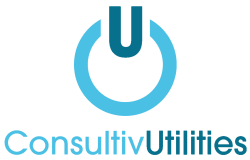Energy bills are among the many costs that business owners must consider when managing their finances. From powering your devices to heating your workplace, business energy is an essential commodity. But if you don’t work towards energy efficiency you can also seriously hamper your cash flow and chip away at profitability if not managed effectively.
It’s important to question whether your energy contact is tailored to your business needs. And, just as importantly, you should question whether you are being efficient with your energy – minimising costs where possible and saving on your company’s carbon footprint as much as is feasible.
Interestingly the Carbon Trust estimates that the majority of businesses could cut their energy spending by at least 10%, simply by making a few straightforward changes. The Trust also reports that a 20% cut in energy costs is equal to a 5% increase in sales across many businesses, so energy efficiency is a worthwhile investment.
From finding a competitive deal to making smart changes to your workplace, there are plenty of steps you can take to improving your energy efficiency.
Shop around
According to energy regulator Ofgem, 58% of small businesses have either never switched their energy suppliers or have only switched once. Business energy is a competitive market, and the right contract can provide huge benefits when it comes to how much you pay and ensuring your energy supply is both efficient and sustainable.
When you fail to be proactive about switching suppliers, you risk being placed on an automatic rollover contract with higher rates and few benefits. Get in the habit of shopping around and seeing what else is out there. It could end up saving you significant charges.
Be smart with your equipment
Routers, computers, tablets, photocopiers and printers are just some of the many devices that can eat into your office energy use, and that’s without mentioning the specialist equipment used by businesses in certain industries like healthcare and manufacturing. However, a few simple changes can significantly minimise your energy consumption in the long run.
Firstly, get in the habit of switching on what you need, and turning off what you don’t. Leaving a computer or monitor on 24 hours a day can cause costs to add up over time, while larger devices like printers and photocopiers are perhaps the most energy-draining pieces of equipment in the space. In fact, they have become known as “energy vampires”. Try to encourage your staff members to go paperless where possible, opting instead to share and save documents via cloud-based software like Google Drive.
These days, most devices come in-built with energy-saving features. Turning on these settings on your laptops, desktops and tablets could result in using up to 70% less electricity.
Know your building
As well as making changes to your devices, you can also make small changes within your workplace to ensure that the building itself is as energy-efficient as possible. Setting thermostats to the right temperature, avoiding obstructing radiators, and investing in draught strips can all help to keep the space feeling heated for longer. Even remembering to close doors when travelling from room to room can help you save over time.
You can take this further by investing ineffective insulation, such as cavity walls. While this can result in a significant cost in the short term, investments are typically recouped within five years.
Implement an energy strategy
It’s important to make sure that everyone within your organisation is on the same page when it comes to energy efficiency, and this means implementing an energy strategy. This can be as specific or as skeletal as you like but should cover key areas of your energy management, including the procurement of equipment, services and property; compliance with sustainability goals and energy regulations; roles and responsibilities within the company; and details on energy efficiency when investing in new projects.
By having a set of guidelines that staff members can refer to, you can make sure that every efficiency is a priority across your organisation.
Categories:
